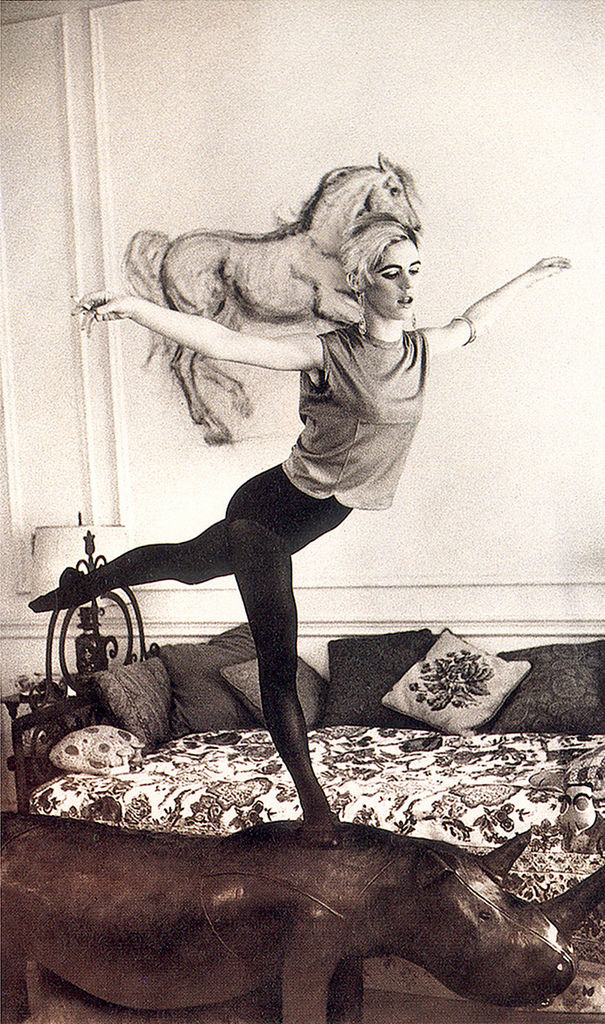Edie Sedgwick: Youth Quaker
- Claire Inkson
- Nov 20, 2019
- 4 min read

In the heady times of 1960s, America was looking for a new it-girl, a poster child for the era, and Edie Sedgwick slipped in to the role, a waif girl in black tights and chandelier earrings, with lashings of black eyeliner and never without a cigarette in hand and Andy Warhol at her hip. Marilyn Monroe had died in 1962, and left a void which Edie filled perfectly. Although at first glance the two women seem polar opposites (Marilyn’s curvy glamour to Edies boyish cool), both embodied the irresistible contradictory mix of vulnerability, innocence, intelligence and foolishness, with a strong sexual allure that was magnetic. Attributes that seemed to have led both women on paths of self-destruction , with men who could have saved them, or at the very least not contributed to their demise, but instead effectively pushed them both to their doom.

Andy Warhol, artist and a cult legend, first meet Edie at a birthday party for playwright Tennessee Williams. Andy, well known for his pop art paintings (think Campbell soup tins), was trying his hand at a different medium: film. In typical Andy style, his films were non-conformist, and anti-Hollywood, often unscripted and almost with a reality television vibe, something that had never been done before. Andy had Edie do a screen test at his New York studio (the famous ‘Factory’) where Andy’s paintings were completed using silk screens for mass production, as well as his numerous other creative endeavours. Her screen test proved she was naturally as enchanting in front of the lens as she was in the flesh, and Andy was hooked. Despite being homosexual, he was infatuated with Edie, with the pair stepping straight into an intimacy that although was non-sexual was incredibly intense and all consuming , categorising their relationship as far more than platonic in nature. Edie even cut her hair and dyed it blonde, so the two were almost identical. Edie was everything Andy wished his was, with her aristocratic heritage, fragility and beauty. And fragile she was: her childhood under the reign of an artistic but damaged father who was abusive and controlling had left Edie and her seven siblings traumatised. Two of her brothers committed suicide, and the family, intoxicatingly rich and high in social class, were plagued with mental health issues and tragedy. Edie herself had been in and out of mental health institutions. During college, and seemingly endless number of boyfriends ( and want to be boyfriends) had done what they could to protect Edie from herself. Even early on, Edies potential for disaster seemed probable. From the outside, to those who only saw her on screen, or in the society pages, she was beautiful, confident, charming. She had everything: money, fame, beauty and success. But in reality, she was crumbling, with a rampant eating disorder and an ever growing drug addiction. Andy cast Edie in the film ‘Poor Little Rich Girl’, and left her to ad-lib, no script required. She was perfect in the role, as herself. She was made for it.
The Factory was the underground hang out of the era, and Edie became the ultimate Factory Girl, appearing in the leading role of around ten of Andys films that year. She modelled for Vanity Fair, was famously labelled a ‘Youth Quaker’ and Andy called her a ‘Superstar’, coining the term we through around so loosely today. The pairs heady relationship lasted no more than a year, until tensions began to form between the two. Andy never paid Edie, or any of his actors, and as Edies' father, known as Fuzzy, became displeased with the nature of the films Edie was starring in, and began to cut his financial support. With an ever-growing drug dependency and a socialite life style to support, pressure on Edie intensified. Tensions between Andy and Edie came to a head when she became involved with musician Bob Dylan. Dylan denied any intimacy, despite Edies claims otherwise. What is clear is that he never told her he was already married, and the news shook Edie, who was in love with the rebellious Dylan, to the core. Dylan cut ties with Edie, and Andy became distant, and both relationships ended as abruptly as they began. Edie entered yet another institution, marrying a fellow patient after only five months. Both Bob Dylan and Andy Warhol could not have missed Edies very obvious fragility, but both men, in very different ways treated her as little more than disposable, and object to be discarded like a child throws away a toy they are bored with. All of the signs of imminent disaster were there in flashing neon, but both men chose to ignore it. If they had placed more value upon her, if they were not as narcissistic in their own very polar opposite ways, perhaps Edies story may have ended differently. “I have an accident about every two years, and one day it won't be an accident.”, she once said.
In November 1971, 48 years ago this month, Edie attended a party and was verbally abused venomously by a woman in the crowd. Edie overdosed on Barbiturates later that night, and died naked in her bed, just as Marilyn Monroe had nearly a decade earlier. Edie once said that she would not live past thirty. She was twenty eight years old.































Comments